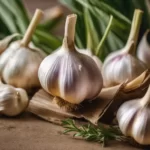Orchids, with their exquisite blossoms and extensive array of species, have long captured the imagination of plant enthusiasts and admirers of natural beauty. These elegant flowering plants are celebrated for their unique and intricate flowers, which have earned them a special place in the world of horticulture. However, a fascinating question arises: Are orchids epiphytes? In this article, we embark on a journey to explore the remarkable characteristics of orchids and their habitat preferences. The mystery of whether orchids are epiphytic adds to the allure of these captivating plants.
Orchids: A Remarkable Floral Family
Before we delve into the habitat preferences of orchids, let’s take a moment to appreciate the splendor of this remarkable floral family:
- Diverse and Enchanting: Orchids belong to one of the largest plant families on Earth, boasting over 25,000 species. They are celebrated for their unparalleled diversity in terms of size, shape, and color of their blossoms.
- Intricate Blooms: Orchids are known for their intricate and often ornate flowers, which exhibit complex structures and a wide range of captivating designs. Their beauty has led to their symbolic association with luxury and refinement.
- Global Distribution: Orchids can be found in almost every corner of the world, from the Amazon rainforests to the arid deserts of Africa. This remarkable adaptability is a testament to the versatility of orchids.
The Epiphytic Lifestyle
To answer the question of whether orchids are epiphytes, it’s crucial to understand the concept of an epiphytic lifestyle:
- Epiphytic Definition: An epiphyte is a plant that grows on the surface of another plant, such as a tree branch, without being parasitic. Epiphytes do not take nutrients from their host plant but instead rely on rainwater, air, and debris for sustenance.
- Typical Habitats: Epiphytic plants can be found in various environments, including tropical rainforests, cloud forests, and even urban landscapes. They often establish themselves on tree trunks, branches, rocks, and other surfaces where they anchor their roots.
- Adaptations: Epiphytic plants have evolved adaptations to thrive in their unique habitats. These adaptations may include aerial roots for anchoring and the ability to absorb moisture and nutrients from the air.
As we continue our exploration, we will delve into the specific relationship between orchids and epiphytism, uncovering the reasons behind the intriguing question of whether orchids are indeed epiphytes.
Orchids and Epiphytism
Orchids, as a remarkable floral family, have a notable association with the epiphytic lifestyle, making them a subject of fascination for botanists and nature enthusiasts:
- Common Epiphytic Orchids: Many orchid species are indeed epiphytic. They have adapted to grow on a variety of surfaces, including tree branches, trunks, and even rocks. Rather than relying on soil, these orchids use their specialized roots to anchor themselves to their chosen substrates.
- Epiphytic Adaptations: Orchids have evolved specific adaptations to thrive in their epiphytic habitats. One of the most distinctive features is their aerial roots, which play a dual role. These roots help anchor the orchid to the host surface and also facilitate the absorption of moisture and nutrients from the surrounding environment, including rain, humidity, and decaying organic matter.
- Global Epiphytic Orchids: Epiphytic orchids can be found worldwide, with a concentration in tropical regions. These orchids often grow high in the canopy of dense rainforests, where the availability of light and moisture is optimal for their growth.
Exceptional Orchid Habitats
The habitats where orchids can be found are incredibly diverse, with many orchid species exhibiting an epiphytic lifestyle in extraordinary environments:
- Tropical Rainforests: Orchids thrive in the lush canopies of tropical rainforests. Their epiphytic nature allows them to access the abundant sunlight and moisture found high in the trees, where they often cling to branches and trunks.
- Cloud Forests: Cloud forests, characterized by their misty, high-altitude environments, are also home to epiphytic orchids. These unique habitats provide the cool, moist conditions that many orchid species require for growth.
- Urban Environments: Orchids can be surprisingly adaptable and can be found in unexpected places, even in urban environments. Orchids may establish themselves on the sides of buildings or in city parks, demonstrating their ability to thrive in diverse conditions.
- Unique Epiphytic Species: Some orchids have developed special relationships with specific trees or microclimates, allowing them to thrive in very particular conditions. These remarkable adaptations reflect the versatility of the orchid family.
The diversity of orchid habitats, from dense rainforests to high-altitude cloud forests and even urban landscapes, showcases the adaptability of orchids and their capacity to flourish as epiphytes. Orchids continue to inspire awe and appreciation for their unique qualities and the varied environments they call home. In the next section, we will explore other habitat preferences of orchids beyond their epiphytic tendencies, shedding light on the diverse range of conditions in which these enchanting plants can be found.
Other Orchid Habitats
While many orchids exhibit an epiphytic lifestyle, it’s essential to acknowledge that orchids are a diverse family with various habitat preferences:
- Terrestrial Orchids: Some orchids grow directly in the ground, earning them the label of terrestrial orchids. These orchids may be found on the forest floor or in rocky crevices. Unlike their epiphytic relatives, terrestrial orchids rely on soil for their nutrients.
- Epilithic Orchids: Epilithic orchids grow on rocks or stone surfaces, displaying remarkable resilience in environments where soil is scarce. They have adapted to extract nutrients and moisture from the rocks they cling to.
- Swamp and Bog Orchids: Certain orchid species prefer wetland environments, growing in swamps, bogs, and marshes. These orchids are specifically adapted to waterlogged conditions and may even have submerged roots.
- Alpine Orchids: Orchids are not confined to tropical climates. Alpine orchids are found in high-altitude regions, enduring cold temperatures and often appearing as ground-hugging plants in alpine meadows.
Conclusion
The captivating world of orchids reveals a fascinating diversity in habitat preferences. While many orchids are indeed epiphytes, thriving in the canopies of rainforests or high in cloud forests, others have adapted to terrestrial, epilithic, swamp, bog, and alpine environments. Orchids exemplify the versatility and adaptability of the plant kingdom.
So, are orchids epiphytes? The answer is both yes and no. Orchids encompass a spectrum of habitat preferences that extend beyond their epiphytic tendencies. This diversity is a testament to their ability to carve out a niche in a wide range of ecological settings, each with its unique set of challenges and opportunities.
The mystery of orchid habitats and their intricate blooms continues to inspire botanists, naturalists, and plant enthusiasts. Orchids invite us to explore the natural world with wonder, appreciating the stunning variety and resilience of these enchanting flowers. Whether clinging to trees in tropical rainforests or carpeting the forest floor in high mountain meadows, orchids remind us of the rich tapestry of life on our planet, and the many ways nature expresses itself.



